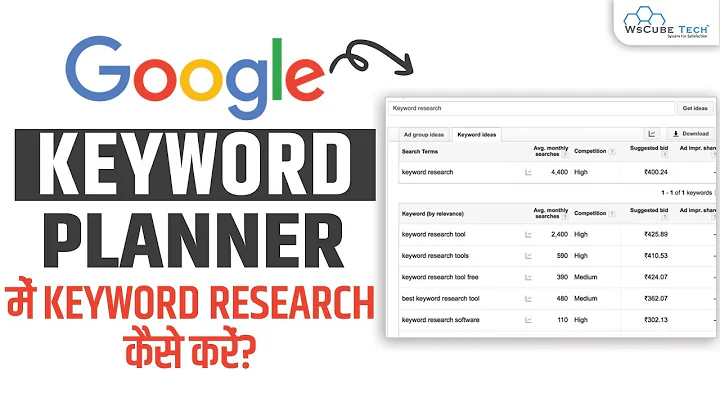Boost Your Website's Performance with AMP Technology
Table of Contents:
- Introduction to AMP
- Benefits of AMP
- Limitations of AMP
- Types of Content Suitable for AMP
- Getting Started with AMP
- Technical Requirements for AMP
- Conclusion
AMP: Accelerated Mobile Pages
In today's digital age, mobile browsing has become increasingly popular. With limited time and attention spans, users expect fast and efficient loading of web pages on their mobile devices. To address this need, Google introduced Accelerated Mobile Pages (AMP), a technology designed to make mobile pages load faster and offer a seamless user experience.
Benefits of AMP
AMP offers several benefits to website owners and users alike. First and foremost, it significantly improves page loading speed, which in turn leads to higher conversion rates. Studies have shown that even a one-second delay in page load time can result in a 7% decrease in conversion rates. By optimizing your pages with AMP, you can provide a faster and smoother browsing experience, ultimately leading to increased user satisfaction and higher conversion rates.
Moreover, AMP allows for wider distribution and easier sharing of your content. Third-party websites, social media platforms, and applications can easily fetch and display your AMP pages, making it more accessible to a larger audience. This increased visibility can drive more traffic to your website and enhance your brand's reach.
Another advantage of AMP is its role in creating a standardized mobile platform. With various methods available for mobile web design, such as responsive design and mobile subdomains, it can be challenging to ensure consistent performance across different devices. AMP provides a uniform technical framework that works seamlessly with these different technologies, allowing for fast-loading web pages regardless of the user's device or browser.
Limitations of AMP
While AMP offers numerous benefits, it also has some limitations to consider. One major drawback is the limited design flexibility offered by AMP pages. These pages are intentionally simplified to prioritize speed and performance, meaning that advanced design features may be challenging to implement. This simplicity can potentially lead to lower conversion rates, especially for websites that rely heavily on visually appealing and interactive elements.
Furthermore, third-party platforms may crawl, index, and display your content without users actually visiting your website. While this can increase impressions, it may result in reduced traffic and missed opportunities for user engagement or lead generation. Additionally, maintaining an AMP version of your website requires significant technical expertise and resources. It essentially involves building another version of your site, which requires ongoing updates and maintenance.
Lastly, despite AMP's growing popularity, its future trajectory is not guaranteed. While Google heavily promotes AMP and displays AMP results in its search results, there is always a possibility of shifting trends and technologies. Therefore, it is crucial to stay updated and evaluate whether AMP aligns with your long-term digital strategy.
Types of Content Suitable for AMP
Initially developed for news and blog content, AMP has expanded to accommodate various types of content. While news articles and blog posts are still ideal candidates for AMP optimization, e-commerce websites can also benefit from AMP implementation. Through specific AMP code, you can create accelerated product pages, category pages, and other user experiences typically found in e-commerce sites. Although AMP's design may be simplistic, it can be suitable for minimalist websites that prioritize seamless browsing experiences.
Getting Started with AMP
Implementing AMP does not require every page of your website to be AMP-ready. You can selectively choose which pages to optimize based on your specific goals and website structure. Starting with your homepage, followed by your blog or news section, is a common approach. You can then gradually expand the implementation to cover other sections, such as e-commerce pages or category pages.
Fortunately, setting up AMP is relatively straightforward, particularly if you are using popular content management systems like WordPress. Plugins are available for platforms like WordPress, Magento, and Drupal, simplifying the implementation process. It is important to configure AMP correctly and monitor its impact on your website's performance and conversion rates using tools like Google Analytics.
To validate your AMP pages, ensure that your HTML documents include the necessary tags and elements. These include the doctype HTML declaration, HTML and AMP tags, rel alternate' links for canonicalization, charset utf-8 encoding, viewport tags, and asynchronous script loading from the AMP project CDN. Adhering to these technical requirements will optimize your AMP pages for performance and compatibility.
Conclusion
AMP is a valuable technology that can significantly enhance mobile user experiences. By leveraging AMP, you can make your web pages load faster, improve conversion rates, and enhance your website's visibility. However, it is important to consider the limitations of AMP, such as limited design flexibility and potential trade-offs in user engagement metrics. While AMP is expanding beyond news and blogs to accommodate e-commerce sites, its longer-term viability remains to be seen. Nevertheless, with careful planning and implementation, AMP can be a valuable addition to your mobile web strategy, providing a faster and more seamless browsing experience for your users.
Website resources:







